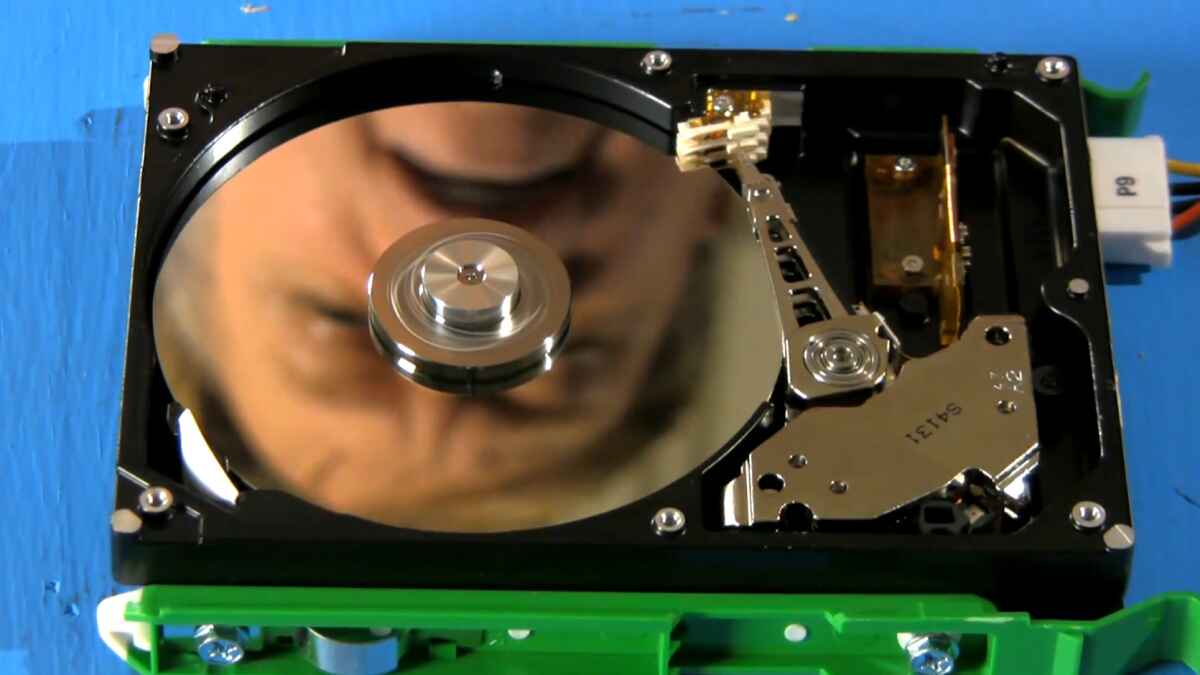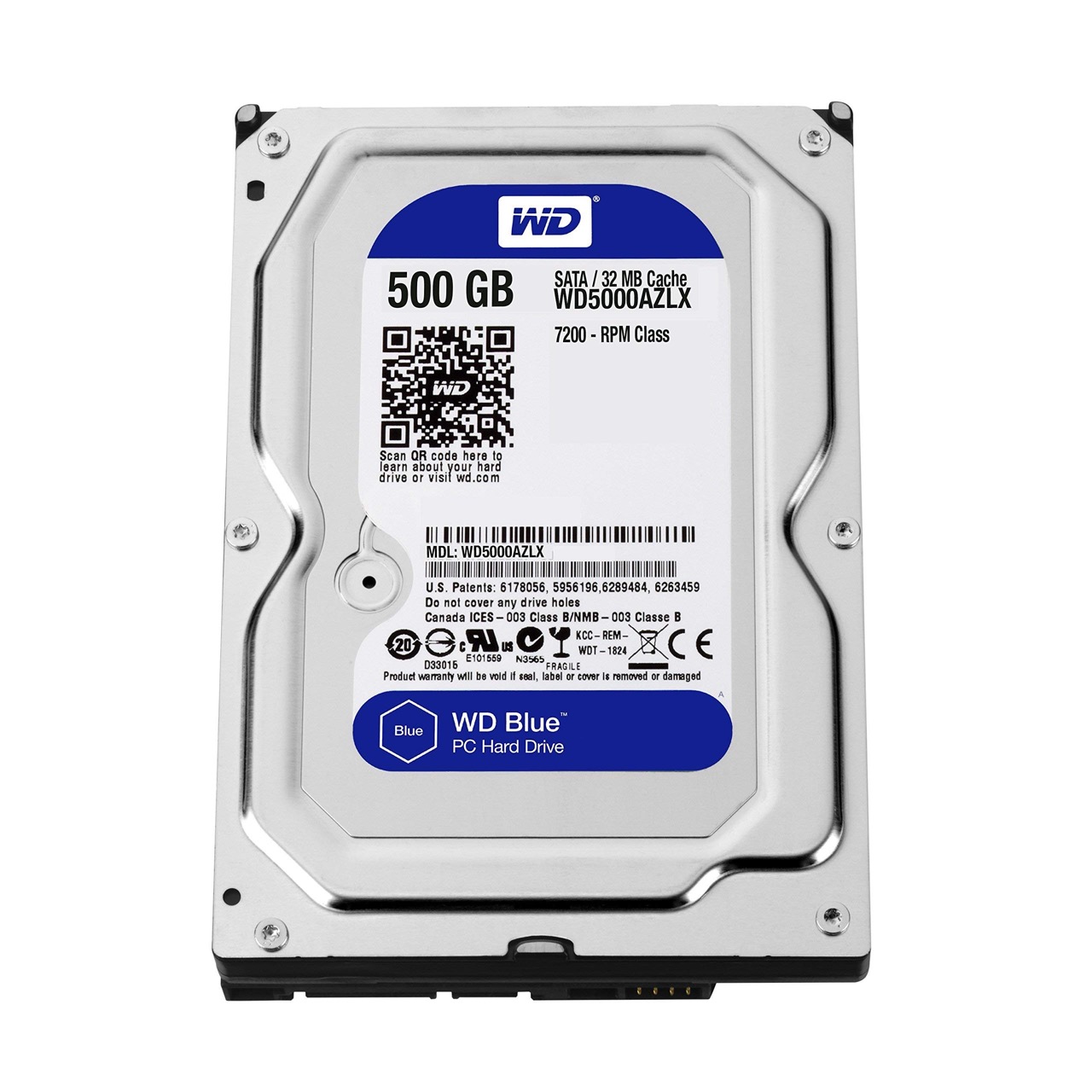Introduction
Welcome to the world of hard disk drives! If you’ve ever wondered how the capacity of these devices is calculated and what factors can affect it, you’ve come to the right place. Hard disk drive capacity plays a crucial role in determining how much data we can store on our computers, laptops, and other devices. Understanding the concepts behind its calculation is key to optimizing storage and making informed decisions when purchasing a new hard disk drive.
Hard disk drives, commonly referred to as HDDs, have been a staple in the world of computer storage for decades. They provide a significant amount of storage space for our files, documents, images, videos, and software. However, the calculation of HDD capacity can sometimes be confusing, with terms like base 10 and base 2, formatted capacity, and usable capacity thrown into the mix.
In this article, we will explore the fundamentals of hard disk drive capacity, how it is measured, and factors that can impact it. By the end of this guide, you’ll have a clear understanding of how to calculate the total and usable capacity of a hard disk drive, ensuring that you can make informed decisions about your storage needs.
So, let’s dive in and unravel the mysteries of hard disk drive capacity, shedding light on the calculation methods and shedding confusion along the way.
What is Hard Disk Drive Capacity?
Hard disk drive capacity refers to the amount of data that can be stored on a hard disk drive. It is measured in bytes and represents the overall storage capacity of the drive. HDD capacity is a critical factor to consider when choosing a storage solution, as it determines how many files, documents, photos, and videos you can store on your device.
The capacity of a hard disk drive is determined by the number of individual sectors it contains. A sector is the smallest unit of storage on a hard disk, typically consisting of 512 bytes. The total number of sectors multiplied by the sector size gives us the overall capacity of the drive. For example, a hard disk drive with 1 million sectors will have a capacity of 512 MB (1 million x 512 bytes).
It is important to note that hard disk drive capacity is not fully accessible for user data storage. Part of the drive’s capacity is reserved for overhead and system files, which are necessary for the drive to function properly. Additionally, hard disk drives undergo a formatting process that further reduces the usable capacity. These factors result in a difference between the total capacity and the usable capacity of a hard disk drive.
Understanding the capacity of your hard disk drive is crucial for managing your storage needs effectively. Whether you are a casual user with a few files or a professional with a massive collection of data, knowing the capacity of your storage device allows you to plan accordingly and determine when additional storage is required.
Now that we have a basic understanding of what hard disk drive capacity is, let’s explore how it is measured in the next section.
How is Hard Disk Drive Capacity Measured?
The measurement of hard disk drive capacity can vary depending on the context and the units used. Generally, HDD capacity is measured in bytes, with each byte representing a unit of digital information. However, there are different conventions and terminologies used in the industry that can sometimes lead to confusion. Let’s explore how hard disk drive capacity is measured and the common terms associated with it.
Hard disk drive manufacturers typically use the metric system (base 10) to measure capacity. In this system, 1 kilobyte (KB) is equal to 1,000 bytes, 1 megabyte (MB) is equal to 1,000,000 bytes, 1 gigabyte (GB) is equal to 1,000,000,000 bytes, and so on. For example, a hard disk drive marketed as having a capacity of 1 terabyte (TB) would contain approximately 1,000,000,000,000 bytes.
However, when it comes to computer systems and file storage, the binary system (base 2) is used. In this system, 1 kilobyte is equal to 1,024 bytes, 1 megabyte is equal to 1,048,576 bytes, 1 gigabyte is equal to 1,073,741,824 bytes, and 1 terabyte is equal to 1,099,511,627,776 bytes. This difference in measurement can lead to some confusion, as the advertised capacity of a hard disk drive in the metric system may appear slightly lower when viewed in the binary system.
It is essential to note that not all the capacity of a hard disk drive is available for storing user data. When a hard disk drive is formatted, a small portion of the total capacity is used for system files and file allocation tables that keep track of the data stored on the drive. This reduces the usable capacity that is available for storing files and documents.
Another factor that can affect the measured capacity of a hard disk drive is the difference in the way operating systems report storage capacity. Some operating systems allocate a portion of the drive’s capacity for system use, further reducing the reported available capacity.
Now that we have explored how hard disk drive capacity is measured and the associated terminologies, let’s delve into the methods for calculating the total capacity of a hard disk drive in the next section.
Calculating Total Capacity
To calculate the total capacity of a hard disk drive, we need to take into consideration the number of sectors and the sector size. Remember, a sector is the smallest unit of storage on a hard disk drive, and it typically consists of 512 bytes.
First, we need to determine the number of sectors on the hard disk drive. This information is usually provided by the manufacturer or can be obtained using disk management software. Let’s say the hard disk drive has 1 million sectors.
Next, we multiply the number of sectors by the sector size (512 bytes) to get the total number of bytes. In our example, the calculation would be: 1 million x 512 = 512,000,000 bytes.
To convert the total number of bytes into more familiar units, we can divide the result by 1,048,576 to get the capacity in megabytes (MB). In our example, the calculation would be: 512,000,000 / 1,048,576 = 488.28 MB.
Similarly, we can divide the total number of bytes by 1,073,741,824 to get the capacity in gigabytes (GB). In our example, the calculation would be: 512,000,000 / 1,073,741,824 = 0.477 GB.
Keep in mind that the total capacity calculated using this method represents the raw capacity of the hard disk drive. This includes the space reserved for system files and other overhead. The usable capacity, which is the amount of storage that can be used to store data, will typically be slightly less than the total capacity due to formatting and allocation of space for system files.
Calculating the total capacity of a hard disk drive allows us to have a better understanding of the amount of storage space available. However, it is important to remember that the usable capacity may be slightly different due to formatting and system overhead.
In the next section, we will explore the calculation of usable capacity and the factors that can affect it.
Calculating Usable Capacity
While the total capacity of a hard disk drive provides valuable information about its storage capabilities, the usable capacity is what truly matters when it comes to storing files and data. The usable capacity refers to the amount of storage space that is available for user data after accounting for formatting, system files, and other overhead.
To calculate the usable capacity of a hard disk drive, we need to consider a few factors:
- Formatting: When a hard disk drive is formatted, a small portion of the total capacity is allocated for the file system and other system files. This reduces the usable capacity. The amount of space allocated for formatting depends on the file system used (such as NTFS or FAT32).
- System Overhead: In addition to formatting, a hard disk drive also reserves some space for system overhead. This includes metadata, journaling, and other internal file management structures necessary for the drive’s operation. The amount of space reserved for system overhead varies depending on the drive’s specifications and the operating system.
To calculate the usable capacity, we subtract the formatted space and system overhead from the total capacity of the hard disk drive. Let’s assume our hard disk drive has a total capacity of 1 terabyte (1,000,000,000,000 bytes), and after formatting and system overhead, 10% of the total capacity is reserved.
The calculation for usable capacity would be: 1,000,000,000,000 – (1,000,000,000,000 x 0.10) = 900,000,000,000 bytes.
Similar to calculating the total capacity, we can convert the usable capacity into more familiar units. For example, dividing the usable capacity by 1,073,741,824 gives us the capacity in gigabytes (GB), and dividing it by 1,048,576 gives us the capacity in megabytes (MB).
It’s important to note that the actual usable capacity may vary slightly depending on factors such as the specific drive model, the file system used, and the operating system. Therefore, these calculations provide an estimate rather than an exact value.
Understanding the usable capacity of a hard disk drive allows us to make informed decisions about our storage needs and effectively manage our files and data. In the next section, we will explore the factors that can affect hard disk drive capacity and how to optimize storage efficiency.
Factors Affecting Hard Disk Drive Capacity
The capacity of a hard disk drive can be affected by various factors, which can impact the overall storage space available for user data. Understanding these factors is crucial for optimizing storage efficiency and managing your files effectively. Let’s explore the key factors that can influence hard disk drive capacity.
- File System: The file system used on a hard disk drive can affect its capacity. Different file systems have varying overhead requirements, which can reduce the usable capacity. For example, NTFS (New Technology File System) typically requires more space for system files compared to FAT32 (File Allocation Table).
- Reserved Space: Some operating systems and disk management tools automatically reserve a portion of the hard disk drive space for features like system restore points, shadow copies, or recycle bin. This reserved space decreases the usable capacity of the drive.
- Bad Sectors: A hard disk drive may develop bad sectors over time, which are areas on the drive that are no longer usable for storing data. The presence of bad sectors reduces the effective capacity of the drive.
- Wear and Tear: With usage, the performance and capacity of a hard disk drive may deteriorate due to wear and tear. As the drive ages, it may experience decreased efficiency and a potential reduction in capacity.
- RAID Configuration: In RAID (Redundant Array of Independent Disks) configurations, multiple hard disk drives are combined to create a single logical drive. Depending on the RAID level used, the overall capacity may be affected by the way the drives are configured in terms of striping, mirroring, or parity.
It’s important to consider these factors when planning storage requirements and managing files. Additionally, regularly monitoring the health of your hard disk drives and performing regular backups can help prevent data loss and ensure optimal performance.
By understanding the factors that can affect hard disk drive capacity, you can make informed decisions when selecting storage solutions and effectively manage your files and data storage needs.
Conclusion
Understanding hard disk drive capacity is essential for managing storage needs effectively and making informed decisions when it comes to purchasing and utilizing storage devices. Throughout this article, we have explored the fundamentals of hard disk drive capacity, including how it is measured, calculating total and usable capacity, and factors that can affect capacity.
We learned that hard disk drive capacity is measured in bytes and can vary based on the base 10 (metric) and base 2 (binary) systems. The total capacity of a hard disk drive is determined by the number of sectors and sector size, while the usable capacity takes into account formatting, system files, and other overhead.
Calculating the total and usable capacity of a hard disk drive gives us valuable insights into the amount of storage space available for storing our files and data. It allows us to plan storage requirements and make informed decisions accordingly.
Various factors can affect hard disk drive capacity, such as the file system used, reserved space, bad sectors, wear and tear, and RAID configurations. Understanding these factors enables us to optimize storage efficiency and manage our files effectively.
As technology continues to evolve, hard disk drives are becoming more advanced, offering larger capacities and improved performance. However, it is important to regularly monitor the health of our storage devices, perform backups, and stay up to date with the latest storage technologies to ensure optimal performance and reliability.
By obtaining a comprehensive understanding of hard disk drive capacity and the factors influencing it, we can make informed decisions about our storage needs, optimize storage efficiency, and ensure the safekeeping of our valuable data.

























